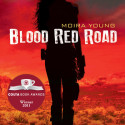Phil Earle talks about CHARACTERS
Today I have the pleasure to welcome Phil Earle, author of Heroic, to the blog.
 There are no rules to writing.
There are no rules to writing.
Anyone who tells you otherwise is either
A) A terrible liar or
B) Wants you to buy their book entitled ‘How to write a bestseller’.
Either way, do not trust this person. They are telling you porkie pies. People can give you writing advice, of course they can, but there is no right, wrong or any one way to create a story. All you can do is listen to the people you trust or whose stories you enjoy and adapt their pearls to suit your own means. Right. That said, here’s me contradicting myself and waffling on about how to create believable, three-dimensional characters.
So don’t take this as gospel, but if any of it makes even a tiny bit of sense then terrific…You have to know your characters as well as you know yourself. Not just your hero, your supporting cast too. There’s nothing more off-putting than characters who at first appear heroic and gallant, only to be knocked over by the first breeze that comes their way. Plan your characters, know their backgrounds and foibles by making them jump through hoops before you put them on the page.
Start with their name in the middle of a blank page and scribble as many associated words as you can around it. For instance, in HEROIC, Sonny is a fifteen-year old scallywag nervously awaiting the return of his older brother from war. Around his name I wrote words that summed up how he felt about life at the start of his journey…
FEARFUL
INSIGNIFICANT
ISOLATED
COMPROMISED
Once the page was full and I knew what was going to happen to Sonny in the course of HEROIC, I repeated the process halfway through his story arc and again at the end. By trying to makes sense of his head-space at various intervals, I learnt more about him and how his mind worked.
I’d argue this isn’t enough to make a character leap off the page though, so I tend to hotseat characters too, a technique often used by theatre directors in their rehearsal process. By making performers sit in an empty chair, and become the character by answering rapidly asked questions, the actor learns more about their role and puts skin on their alter-ego’s bones. It doesn’t matter if the answers to questions like ‘What’s your earliest memory?” don’t appear in the finished book. That’s not the important thing. What’s important is that you, the writer, knows the answer, because if you know, then you know the character well. And if they feel real to you, then it’s more likely they’ll do the same for your readers.
The final piece of advice I’d offer about character building is this: that as well as loving your inventions, you have to be unbelievably cruel to them too.Put them through the wringer, the most horrific situations imaginable, as by doing so, and by giving them a serious character arc, you will build a stronger relationship between them and the reader. MAKE your readers root for your characters, make it impossible for them to put their story aside until it is finished. Make the next book they look for in the bookshop by you as well…





